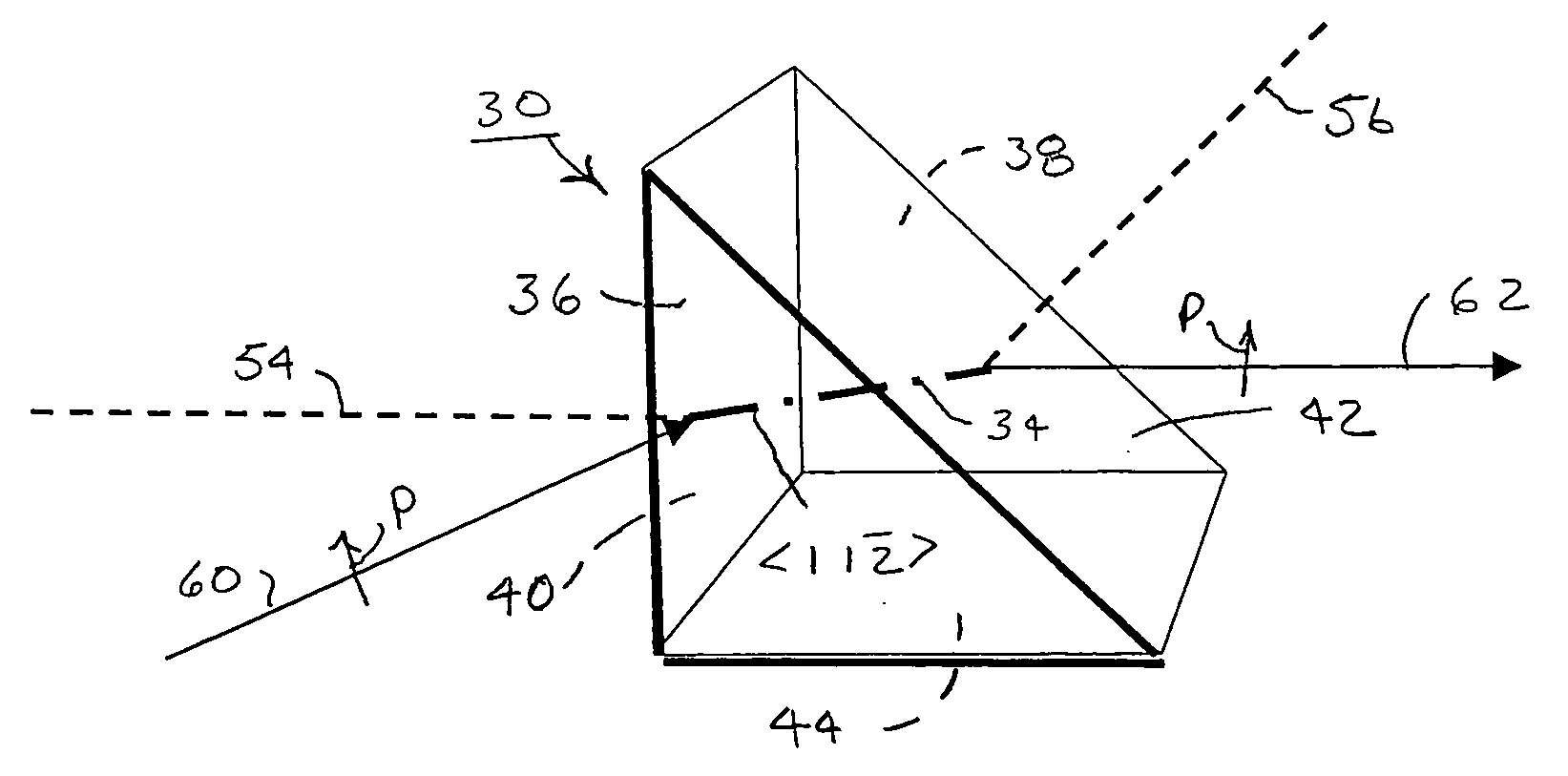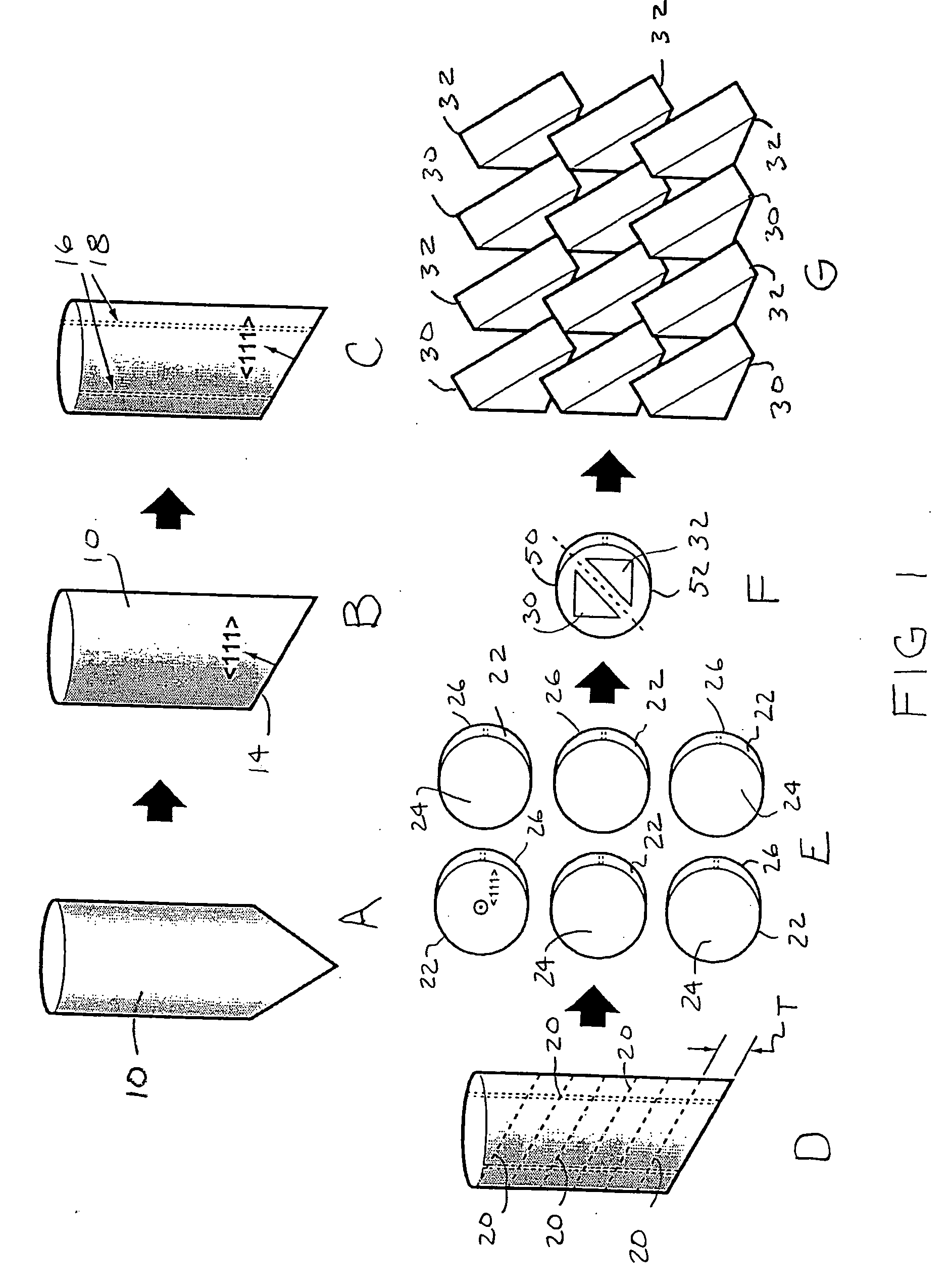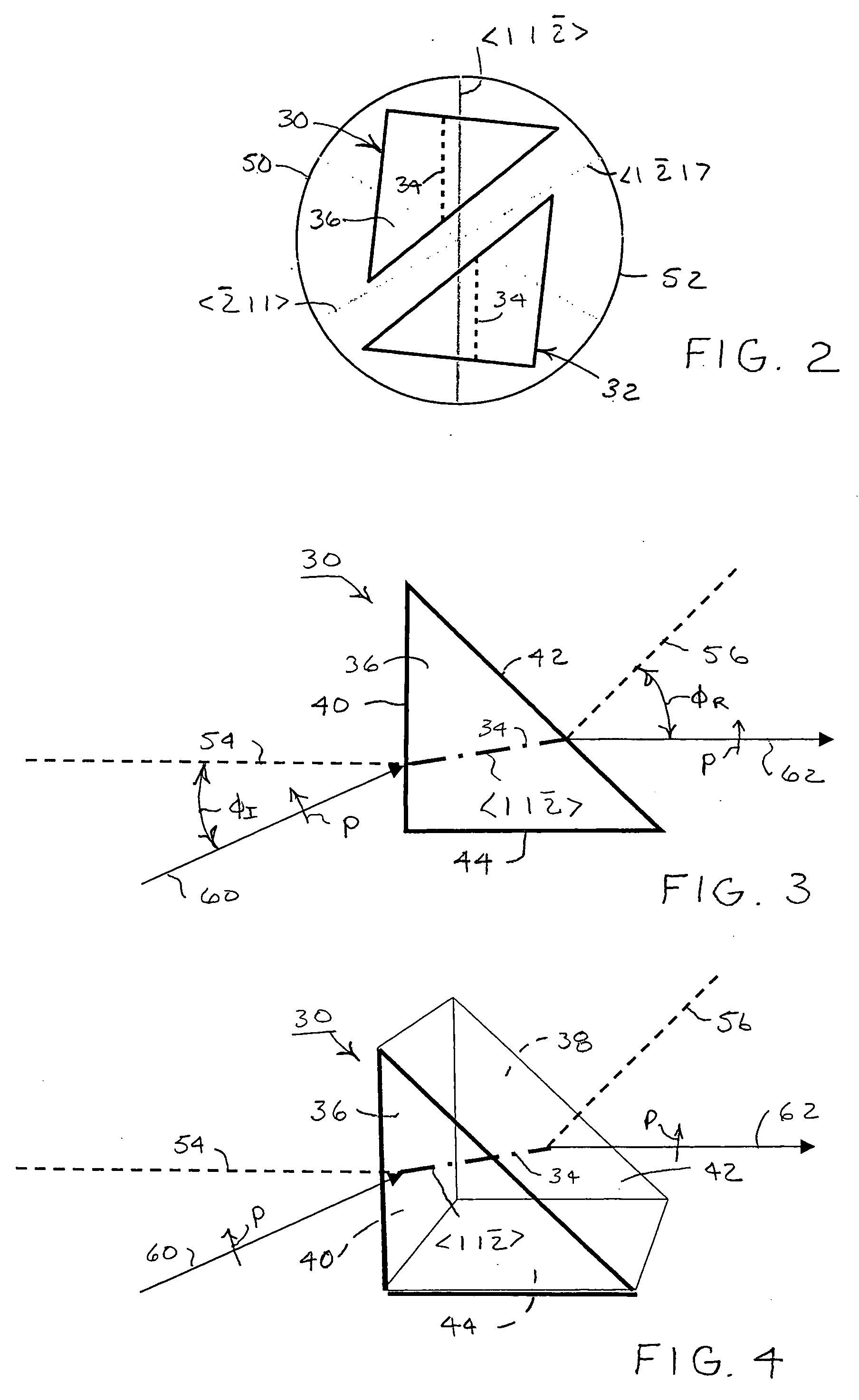Increased yield of cubic crystalline optical elements by crystal orientation
a technology of optical elements and cubic crystalline elements, applied in the field of cubic crystalline optical elements, can solve the problems of limited number of materials capable of transmitting ultraviolet light, insufficient transmissivity of ordinary optical materials, and weakening of material limitations that do transmit ultraviolet light,
- Summary
- Abstract
- Description
- Claims
- Application Information
AI Technical Summary
Benefits of technology
Problems solved by technology
Method used
Image
Examples
Embodiment Construction
[0019] A sequence of processing steps laid out in FIG. 1 exemplifies a method for increasing yield of optical elements from a cubic crystal material in accordance with the invention. Beginning with Step A, a crystal rod 10 made of calcium fluoride is grown either with randomly oriented crystal axes or with crystal axes having a preferred orientation imposed by seeding. Either way, the exact orientation of the crystal axes is not immediately apparent from the crystal rod.
[0020] In Step B, the crystal rod 10 is cleaved near one end along the {1 1 1} plane normal to the main axis. In such calcium fluoride crystals, this is the crystal plane along which the crystal most readily breaks and provides a convenient and accurate reference plane 14 for the crystal rod 10. Although the {1 1 1} reference plane 14 identifies one of the crystal axes, i.e., the main crystal axis, it is necessary to identify a second axis to fully orient the cubic crystal.
[0021] Step C involves an inspection pro...
PUM
 Login to View More
Login to View More Abstract
Description
Claims
Application Information
 Login to View More
Login to View More - R&D
- Intellectual Property
- Life Sciences
- Materials
- Tech Scout
- Unparalleled Data Quality
- Higher Quality Content
- 60% Fewer Hallucinations
Browse by: Latest US Patents, China's latest patents, Technical Efficacy Thesaurus, Application Domain, Technology Topic, Popular Technical Reports.
© 2025 PatSnap. All rights reserved.Legal|Privacy policy|Modern Slavery Act Transparency Statement|Sitemap|About US| Contact US: help@patsnap.com



